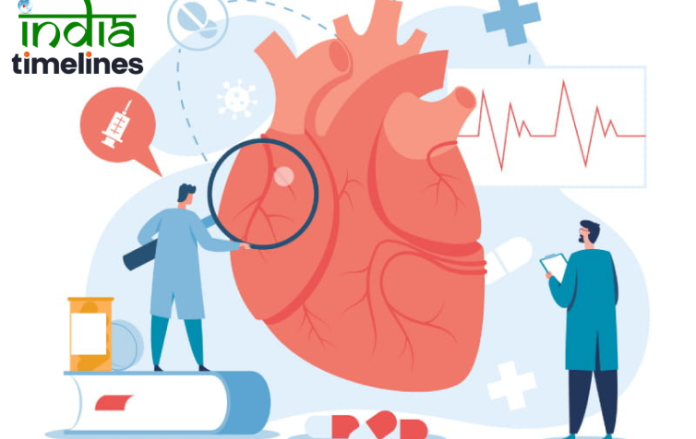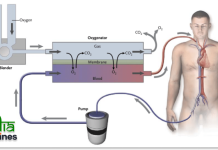
Heart disease continues to be a leading cause of death worldwide, but remarkable advancements in medical science and technology are revolutionizing the way we diagnose, treat, and prevent cardiovascular conditions. These innovations are not only enhancing the quality of life for patients but are also saving countless lives. In this blog, we will explore five significant advances in heart health that are making a profound impact on patient outcomes and offering new hope for those affected by heart disease.
1. Percutaneous Coronary Intervention (PCI)
Overview: Percutaneous coronary intervention (PCI), commonly known as angioplasty, is a minimally invasive procedure used to open up blocked coronary arteries, thereby restoring blood flow to the heart muscle. This procedure has become a cornerstone in the treatment of coronary artery disease (CAD) and acute myocardial infarction (heart attack).
Advances and Impact:
- Drug-Eluting Stents (DES): One of the most significant advancements in PCI is the development of drug-eluting stents. These stents are coated with medication that helps prevent the re-narrowing of the artery (restenosis) after the procedure. DES have significantly reduced the incidence of restenosis compared to bare-metal stents, improving long-term outcomes for patients.
- Intravascular Imaging: Techniques such as intravascular ultrasound (IVUS) and optical coherence tomography (OCT) provide detailed images of the inside of blood vessels. These imaging modalities allow for precise assessment of plaque composition and stent placement, enhancing the success of PCI.
- Chronic Total Occlusion (CTO) Techniques: Advances in specialized tools and techniques have improved the success rates of PCI for chronic total occlusions, which are complete blockages of coronary arteries. These techniques enable interventional cardiologists to treat complex cases that were previously deemed untreatable with minimally invasive methods.
2. Transcatheter Aortic Valve Replacement (TAVR)
Overview: Transcatheter aortic valve replacement (TAVR) is a revolutionary procedure for treating severe aortic stenosis, a condition characterized by the narrowing of the aortic valve opening. Traditionally, patients with severe aortic stenosis required open-heart surgery to replace the valve. TAVR offers a less invasive alternative with similar, if not better, outcomes for certain patient populations.
Heart Specialist Doctor Ravinder Singh Rao. Call now to Appointment
Advances and Impact:
- Expanded Indications: Initially approved for patients at high or prohibitive surgical risk, TAVR has shown such favorable results that its use has expanded to include intermediate and even low-risk patients. Clinical trials have demonstrated that TAVR can be as effective as surgical aortic valve replacement (SAVR) in these populations.
- Improved Valve Designs: Ongoing advancements in valve technology have led to the development of next-generation TAVR devices. These newer valves offer improved durability, better hemodynamics, and reduced risk of complications such as paravalvular leak.
- Minimally Invasive Approach: TAVR is performed via a catheter inserted through a small incision in the groin or chest, avoiding the need for a large chest incision and cardiopulmonary bypass. This minimally invasive approach results in shorter recovery times, reduced hospital stays, and lower overall healthcare costs.
3. Cardiac Resynchronization Therapy (CRT)
Overview: Cardiac resynchronization therapy (CRT) is a treatment for heart failure that involves the implantation of a specialized pacemaker to improve the coordination of the heart’s contractions. Heart failure often leads to dyssynchronous heartbeats, where the ventricles do not contract simultaneously, reducing the efficiency of the heart’s pumping action.
Advances and Impact:
- Biventricular Pacing: CRT devices deliver electrical impulses to both the right and left ventricles, promoting synchronized contraction. This biventricular pacing can significantly improve cardiac output, reduce symptoms, and enhance the quality of life for heart failure patients.
- Device Optimization: Advances in device technology and programming have improved the ability to tailor CRT therapy to individual patient needs. Features such as adaptive algorithms and remote monitoring enable clinicians to optimize device settings for maximal therapeutic benefit.
- Expanded Indications: Initially recommended for patients with severe heart failure and wide QRS complexes on electrocardiograms (ECGs), CRT has been found beneficial for a broader range of patients, including those with mild to moderate heart failure and narrower QRS complexes. This expansion has allowed more patients to benefit from CRT.
4. Advanced Imaging Techniques
Overview: Advancements in cardiac imaging have transformed the diagnosis and management of heart disease. Non-invasive imaging techniques provide detailed information about the structure and function of the heart, allowing for early detection of disease and precise treatment planning.
Advances and Impact:
- Cardiac Magnetic Resonance Imaging (MRI): Cardiac MRI offers high-resolution images of the heart and great vessels without exposure to ionizing radiation. It is particularly useful for assessing myocardial viability, scarring, and congenital heart defects.
- Computed Tomography Angiography (CTA): CTA provides detailed images of the coronary arteries and is increasingly used as a non-invasive alternative to invasive coronary angiography. It is valuable for diagnosing CAD, planning interventions, and evaluating coronary artery anomalies.
- 3D Echocardiography: Three-dimensional echocardiography provides comprehensive views of cardiac structures and function, improving the assessment of valve diseases, cardiomyopathies, and congenital heart defects. This technology enhances the accuracy of diagnosis and guides therapeutic decision-making.
5. Genetic and Molecular Therapies
Overview: The advent of genetic and molecular therapies represents a new frontier in the treatment of heart disease. These therapies target the underlying genetic and molecular mechanisms of disease, offering the potential for more precise and personalized interventions.
Advances and Impact:
- Gene Therapy: Gene therapy involves delivering therapeutic genes to cardiac cells to correct or compensate for defective genes. Research is ongoing to develop gene therapies for conditions such as dilated cardiomyopathy and inherited arrhythmias. Early clinical trials have shown promise in improving cardiac function and reducing disease progression.
- RNA-Based Therapies: RNA-based approaches, including antisense oligonucleotides and RNA interference (RNAi), are being investigated for their potential to modulate gene expression in heart disease. These therapies can target specific genetic mutations or pathways involved in cardiac dysfunction.
- CRISPR-Cas9: The CRISPR-Cas9 gene-editing technology offers the potential to precisely edit disease-causing genes in the heart. Although still in the early stages of research, CRISPR-Cas9 holds promise for treating genetic forms of heart disease and repairing damaged cardiac tissue.
Conclusion
The advances in heart health highlighted above are transforming the landscape of cardiovascular care, offering new hope and improved outcomes for patients with heart disease. From minimally invasive procedures like PCI and TAVR to innovative therapies like CRT, advanced imaging techniques, and genetic and molecular therapies, these developments are saving lives and enhancing the quality of life for countless individuals.
While the fight against heart disease is far from over, continued research and innovation are paving the way for even more effective treatments and preventive measures. By staying informed about the latest advancements in cardiology and supporting efforts to bring these innovations to clinical practice, we can contribute to a future where heart disease is more manageable and less devastating.
In summary, the progress in heart health over the past few decades is a testament to the power of scientific discovery and medical ingenuity. As we move forward, the integration of these advanced treatments into everyday clinical practice will be crucial in reducing the global burden of heart disease and improving cardiovascular health for all.




































